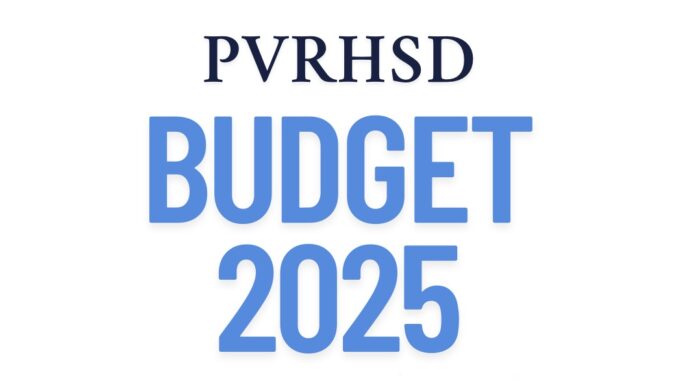
MONTVALE, N.J.—The Pascack Valley Regional High School District Board of Education will hold a public hearing on Monday, April 28 and vote on a proposed budget of nearly $70 million for the 2025–2026 school year.
The grades 9–12 district includes two high schools: Pascack Hills in Montvale that accepts students from Montvale and Woodcliff Lake and Pascack Valley in Hillsdale that accepts students from Hillsdale and River Vale.
The local tax levy on the four towns in Pascack Valley Regional High School District will increase approximately 3.4% over 2024’s budget, adding up to average annual tax increases that range between 38 cents and $121, said the district’s assistant board administrator at a March budget presentation.
The tax calculations per town vary yearly and are based on a state tax formula that includes taxable property wealth and student enrollment. Officials stressed that state officials determine the formula that sets local tax levies.
Based on figures released, Montvale’s tax levy increase on an average home assessed at $549,603 comes to an increase of 38 cents annually.
Meanwhile, Hillsdale will see an average home assessed at $476,683 increase $121.21 in annual taxes, the highest increase of the four sending towns.
Montvale’s average regional school tax bill will be $3,770, while the average Hillsdale regional bill will be $3,774, said Assistant School Business Administrator Cynthia Kirk during a budget presentation in mid-March.
In the other towns, an average assessed home at $944,047 in Woodcliff Lake will see an average $59.59 property tax increase with an average tax bill of $5,852, officials said.
An average home assessed at $592,000 in River Vale will see an average $54.95 school tax increase, with an annual tax bill of $3,990.
The proposed 2025-2026 school budget totals $69,902,245, Kirk told about five residents at the March budget meeting. As of April 21, the meeting’s YouTube video had 97 “views” recorded out of 274 subscribers to the channel.
Local tax levy: $57.6 million
The local tax levy — the amount divided up among the district’s four towns — increased 3.42% over last year. Increasing to $57,582,399 from last year’s $55,676,473.
Kirk said that some contributing factors included increases of $386,245 in special education programs and services; $383,568 more in operations and maintenance; and a $113,984 jump in athletics and co-curricular activities.
She noted that the four towns pay 85% of the district’s budget and about 6%, or $3.9 million, comes from state/federal aid. Other major revenue sources supporting the budget include fund balances, capital, maintenance and emergency reserves, and tuition revenues.
Kirk showed a slide noting that salaries make up approximately $36,325,942, or 54.2% of the 2025 budget, and employee benefits at $10,376,846 compose 15.5% of the budget, adding up to nearly 70% of the budget to reimburse employee salaries and benefits.
Kirk also said there would be an $800,000 health care insurance cost adjustment due to rising costs there. Previously, Business Administrator Yas Usami said they were anticipating a 15% to 20% increase in state health benefits.
At a prior meeting. Usami said declining district enrollments “for the foreseeable future” had affected state aid amounts and will continue to do so. Usami said the decline had been ongoing since around 2012 or 2013.
Usami said the state may allow more budget adjustments and special education adjustments due to rising costs and declining reimbursement.
Curricular offerings in 2025
Kirk said some curricular proposals for 2025 include continued implementation of CPR certification and bleeding control training for all staff and students; embedded “real world learning” college and career training in various curricular areas; continued focus on social-emotional health, wellness and mental health practices for students and faculty; expanding the use of Gemini AI in the classroom; partnering with Insite Health to provide specialized mental health services and foster a safe and supportive learning environment; and addition of 17 clubs between both schools.
Other curricular proposals include enhanced scheduling allowing students to enroll in an additional course, if desired; online and hybrid offerings like financial literacy and virtual high school; updated tech and materials to keep the district on the cutting edge; a new pilot course in music; implementation of new state curriculum standards; professional development for advanced placement;
The proposed budget includes a capital reserve withdrawal from capital reserve for $1,600,000 for a Media Center rooftop unit at Pascack Valley High School, along with a $430,000 withdrawal from maintenance reserves, plus a $38,348 emergency reserve withdrawal to improve school security district-wide.
A chart depicting eight years of “tax impact history” was included in the March 17 presentation to show school tax “fluctuation and how it varies from year to year,” said Kirk. Kirk’s presentation can be found on March 17’s YouTube video beginning at the 31-minute mark through the 50-minute mark. No questions were asked by trustees or the public at the budget session.
